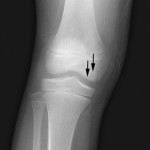Can We Get Better Results?
The answer is yes. I am certain that following many physiotherapy or physical therapy treatments there is something else that could have been done or said that would allow the patient to get better results. Unfortunately, most physiotherapists do not have all day to spend with one patient, and are thus limited in what they can do. We just want to hope that we can efficiently deliver the best possible treatment or intervention in any given environment. This is why prioritising treatments and using Pareto’s Law can be quite important.
High level sports people and athletes have great access to health professionals and have the ability to get daily (or even more frequent) treatments. As an example, listen to Jeff Boyle’s podcast on Groin Injury Prevention who is able to treat his athletes for hours every day. Unfortunately, many physiotherapists or physical therapists are only able to see their patients/athletes weekly. This decreased interaction with patients/athletes means that you must fully utilise both micro and macro management of your athlete’s injuries.
Micro-Management Of Your Athlete
Physiotherapists and physical therapists are great at micro-management of their athlete’s injuries. This is because this is how we learn about injuries and their management. If we take as an example, the treatment of a simple lateral ankle sprain (yes, the much talked about simple one). The sports physiotherapists would likely utilise the newly suggested POLICE approach (Bleakley et al., 2012):
- Protection: likely using either Ankle Brace or Taping (another argument in itself)
- Optimal Loading: the physiotherapist would likely prescribe appropriate exercises to optimally load the healing tissue (Kerkhoffs et al., 2002)
- Ice, Compression and Elevation: the clinical use of which has been previously discussed on this site (RICE or MEAT Protocol)
- The physiotherapist or physical therapist may also choose to deliver manual therapy to the ankle, to reduce pain and increase ROM (possibly MWM techniques).
Whilst this treatment list is in no ways exhaustive, you can see that this would be considered a pretty darn good treatment session. However, all this stuff is micro-management of the athlete’s injury and is targeted directly at the injured site/joint. To have the maximum treatment effect it is important to also target the macro-management of your patient.
Macro-Management Of Your Athlete
The most experienced physiotherapists and physical therapists do this in an incredibly efficient and sophisticated manner. The cornerstone of awesome athlete macro-management is education. In order to gain the absolute best treatment results from your athletes you need to ensure that they are making the best use of the time that they are not with you. This means it is important that you take time to educate your athletes on:
- Correct dosage of prescribed exercises
- Other self management procedures, e.g. self icing or releases etc
- Things to avoid: including movements, positions and activities such as training/gym etc
- Things to do: including non-specific therapeutic activities including appropriate training/bike work/hydrotherapy etc
- Bad habit to avoid and good habits to develop
Your gold standard manual treatment and exercise prescription will mean nothing if the athlete leaves the clinic and wrecks it all by training on an injury or (sometimes worse) doing nothing at all!
So the next time you are finishing up with a athlete/patient and thinking ‘have I forgotten anything?’, make sure there is a clear plan for what athlete will (or should) do before they see you again. Whilst either approach (micro or macro) may be effective, combining the approaches will enhance your athlete’s outcomes and get them back on the field earlier.
What Are Your Thoughts?
What are your experiences utilising macro-management techniques? I would love to know so be sure to let me know in the comments or catch me on Facebook or Twitter.
Advertise your clinic: Are you a physiotherapist or physical therapist looking to promote your own clinic, check this out.
References
Bleakley CM, Glasgow P, MacAuley DC. PRICE needs updating, should we call the POLICE? Br J Sports Med 2012;46:220-221
Kerkhoffs GMMJ, Rowe BH, Assendelft WJJ, Kelly KD, Struijs PAA, van Dijk CN. Immobilisation and functional treatment for acute lateral ankle ligament injuries in adults. Cochrane Database of Systematic Reviews 2002, Issue 3.
Photo Credit: MegMoggington
Related Posts
Comments











I hope every Physio does both macro and micro management?? Two things I think need to be addressed however is physios poor application of sets and reps, with 3 x 10 just not being good enough. Furthermore I think educating patients about their injury is the best macro management tool as allows them to mentally understand what they should and should not do.
Great site. Keep it up.
Good point about exercise dosage Adam. I think I fall into the 3/10 trap too often. Wondering what others use to base their exercise prescription on…to the point of fatigue, until form breaks down, etc…can’t rely on a % of 1 rep max if doing assisted/partial bw exercise…any suggestions or thoughts?